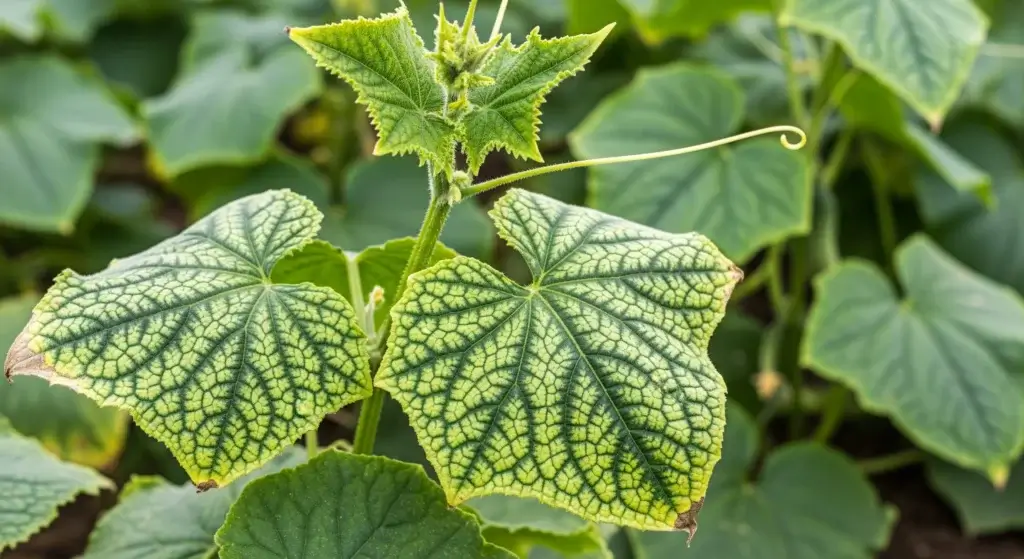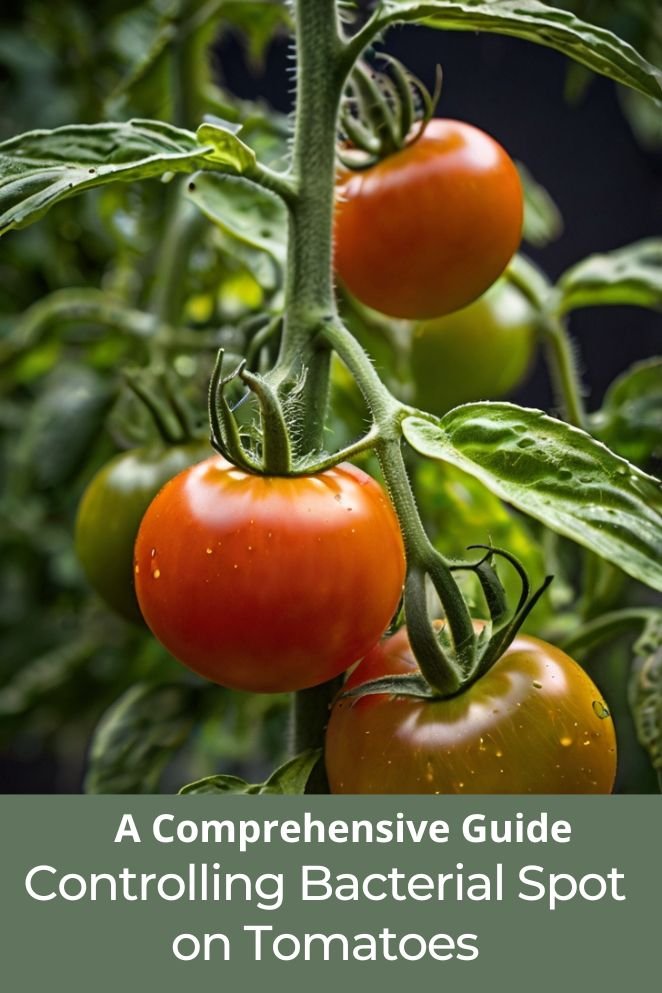
Bacterial spot is a bacterial disease that affects tomatoes, causing small, dark, water-soaked spots to form on the leaves and stems.
The disease is caused by the bacterium Xanthomonas campestris pv. vesicatoria and is spread through contaminated water, pruning tools, and infected seedlings.
Bacterial spot can cause significant damage to tomato plants, reducing yields and affecting the quality of the fruit.
Understanding Bacterial Spot
Bacterial spot is a bacterial disease that affects tomatoes, causing small, dark, water-soaked spots to form on the leaves and stems.
The disease is caused by the bacterium Xanthomonas campestris pv. vesicatoria and is spread through contaminated water, pruning tools, and infected seedlings.
Bacterial spot can cause significant damage to tomato plants, reducing yields and affecting the quality of the fruit.
- Read also: Unexpected Allies: Best Companion Planting for Your Tomatoes
- Read also: Effective Strategies for Getting Rid of Tomato Hornworms
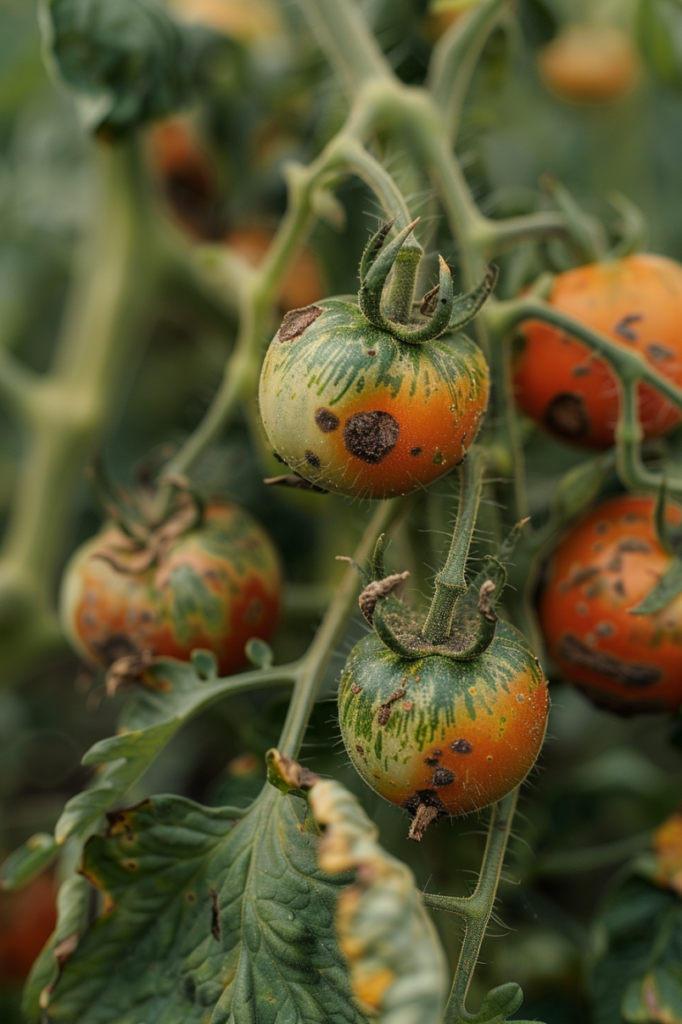
How to Identify Bacterial Spot
Bacterial spot is a disease that tomato growers should watch out for. Here’s how you can identify it:
Look for spots
The first indication of bacterial spot is the appearance of small, dark, water-soaked spots on the leaves and stems of your tomato plants.
These spots are usually less than 1/4 inch in diameter but can grow larger over time.
They may be circular or irregular in shape, and initially, they might be difficult to notice.
Regularly inspecting your plants can help you catch these early symptoms.
Size of spots
As the disease progresses, these spots can increase in size and number.
Typically, they grow up to 1/4 inch in diameter.
The centers of these spots often become dry and brittle, while the edges remain dark and water-soaked.
This distinctive appearance is a key feature of bacterial spot.
Halo effect
One of the most noticeable features of bacterial spot is the halo effect.
The spots are often surrounded by a yellow or white halo, which makes them stand out against the green foliage.
This halo is caused by the plant’s natural response to the bacterial infection, which tries to limit the spread of the bacteria.
The contrast between the dark spots and the bright halo makes it easier to identify the disease.
Progression of the disease
As the bacterial spot advances, the spots can merge, forming larger blotches that can severely damage the leaves.
The affected leaves may turn yellow, wilt, and eventually die.
This defoliation can weaken the plant, making it less able to produce healthy fruit.
The stems and fruit can also be affected, developing similar dark, water-soaked lesions.
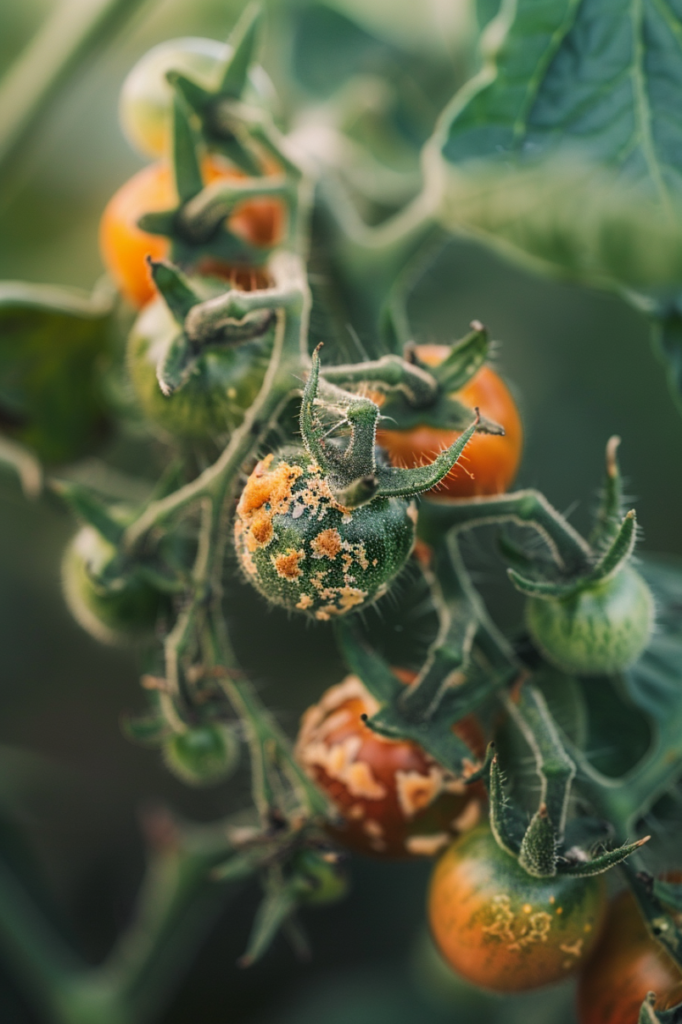
Impact of Bacterial Spot on Tomatoes
Understanding its impact can help you take steps to protect your plants and ensure a bountiful harvest.
Here’s a closer look at how bacterial spot affects tomato plants:
Leaf and stem damage
The most immediate and visible impact of bacterial spot is the damage it causes to the leaves and stems of the plant.
Initially, the disease manifests as small, dark, water-soaked spots.
These spots can grow and merge, creating large, necrotic (dead) areas on the leaves.
Yield reduction
One of the most concerning effects of bacterial spot is its impact on tomato yield.
Infected plants are often less vigorous and produce fewer tomatoes.
The disease stresses the plant, diverting its energy and resources away from fruit production towards fighting the infection and trying to repair damaged tissues.
Fruit quality
Bacterial spot doesn’t just affect the quantity of tomatoes; it also impacts the quality.
The disease can spread to the fruit itself, creating dark, sunken spots that make the tomatoes unsightly and unappealing.
These blemishes can render the fruit unsuitable for sale in markets where appearance is a key factor in consumer choice.
How It Spreads
Contaminated water
One of the primary ways bacterial spot spreads is through contaminated water.
When water containing the bacteria is used to irrigate tomato plants, the pathogens can easily transfer to the plants.
This contamination can occur in several ways:
- Rain splash: During rainfall, water splashes from the ground onto the lower leaves of the tomato plant, carrying bacteria from the soil.
- Overhead irrigation: Using sprinklers or hoses that spray water over the plants can spread bacteria if the water source is contaminated.
- Runoff water: Water running off from infected plants can carry bacteria to healthy plants, spreading the disease through the garden or field.
Pruning tools
Pruning is an essential part of maintaining healthy tomato plants, but it can also be a vector for disease spread if not done carefully.
Tools such as scissors, knives, and pruning shears can become contaminated with bacteria when used on infected plants.
If these tools are not properly sanitized before being used on healthy plants, they can transfer the bacteria, initiating new infections.
Infected seedlings
Starting with healthy seedlings is crucial for a successful tomato crop.
Unfortunately, bacterial spot can sometimes be introduced into your garden or field through infected seedlings.
These young plants may already carry the bacteria, and once planted, they can spread the disease to other plants.

How to Prevent Bacterial Spot
There are several ways to prevent bacterial spot on tomatoes, including:
Proactive measures
Use certified disease-free transplants
When starting your garden or farm, it’s crucial to begin with healthy plants that are certified disease-free.
This means they have been inspected and confirmed to be free from harmful bacteria that can cause diseases like bacterial spot.
Practice crop rotation
Crop rotation involves planting different crops in a specific sequence on the same piece of land.
This method breaks the disease cycle because many plant-specific diseases, including bacterial spot, rely on the continuous presence of susceptible hosts.
Provide good air circulation
Proper air circulation around plants is essential for preventing the spread of bacterial spot.
When plants are densely packed or air movement is restricted, moisture can accumulate on leaves and create a favorable environment for bacteria to thrive.
Water at the base of the plant
Watering plants at the base rather than from above can help minimize the risk of bacterial spot.
When you water at the base, you avoid wetting the foliage excessively.
Bacteria that cause diseases like bacterial spot can spread through splashing water that carries pathogens from one plant to another.
Disinfect pruning tools
After each use, it’s important to clean and disinfect pruning tools such as scissors, shears, or pruning knives.
Bacterial spot and other diseases can easily transfer from plant to plant through contaminated tools.
Organic Management
In addition to these proactive measures, there are several organic management strategies that can help manage bacterial spot on tomatoes, including:
Apply copper-based fungicides
Copper-based fungicides are effective in managing bacterial spot because copper ions disrupt the cellular processes of bacteria, preventing their growth and spread.
These fungicides create a protective barrier on plant surfaces, reducing the ability of bacteria to infect leaves and fruit.
Encourage beneficial insects
Beneficial insects, such as ladybugs, play a crucial role in organic pest management.
Ladybugs and other predators feed on pests that can spread bacterial spot indirectly, such as aphids and leafhoppers.
Use biological control agents
iological control agents, such as Trichoderma harzianum, are beneficial fungi that can help manage bacterial spot.
These agents work by outcompeting and inhibiting the growth of the bacterium responsible for the disease.
They colonize the plant roots and surrounding soil, enhancing the plant’s natural defense mechanisms against pathogens.
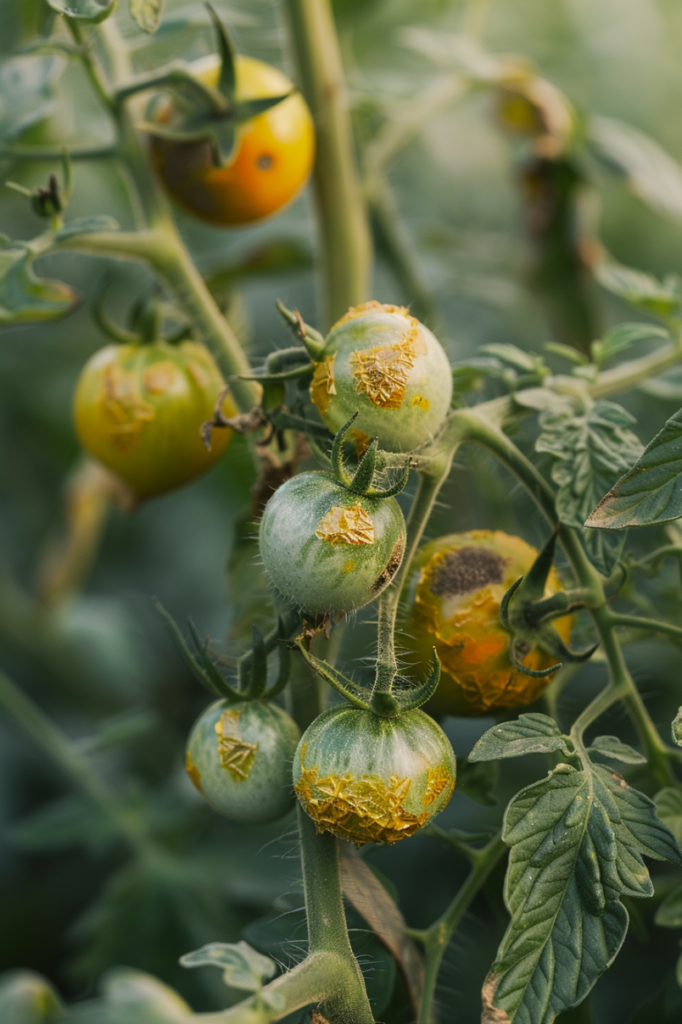
- Read also: Growing Healthy: A Guide to Natural Pesticides for Tomatoes
- Read also: A Guide: Mastering the Art of Drip Irrigation for Tomatoes
Conclusion
Bacterial spot is a common disease that affects tomatoes, causing significant damage to the plant and reducing yields.
By understanding the causes, symptoms, and management strategies for bacterial spot, you can take proactive measures to prevent the disease and manage it effectively.
FAQs
Bacterial spot is caused by the bacterium Xanthomonas campestris pv. vesicatoria and is spread through contaminated water, pruning tools, and infected seedlings.
Bacterial spot can be identified by looking for small, dark, water-soaked spots on the leaves and stems of the tomato plant.
There are several ways to prevent bacterial spot on tomatoes, including using certified disease-free transplants, practicing crop rotation, providing good air circulation, watering at the base of the plant, and disinfecting pruning tools.

